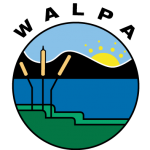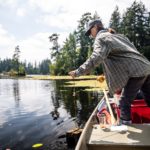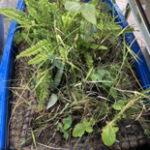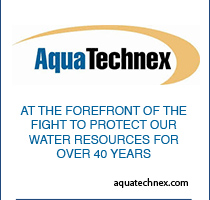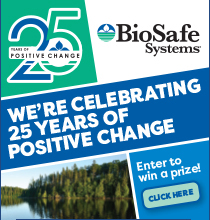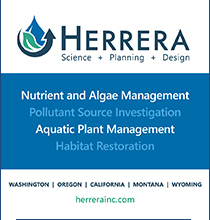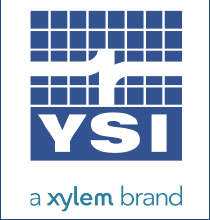WALPA 2019 conference at Chelan a Halloween success
by Sally Abella
The annual WALPA conference was held at Campbell’s Resort in Chelan, WA from October 30th to November 1st this year. The 73 attendees displayed lots of enthusiasm, and a costume party on Halloween night was thrown in for even more fun. As a bonus, food quality for the breakfasts, lunch, and Happy Hour buffet was exceptional.
This year’s theme was “Lakes are for Everyone,” recognizing the many roles that lakes play in our lives, from environmental buffers and habitats to recreation and aesthetics.
Observations of drawdown treatments
by David Kluttz and Kendall Corn, Lakeland Restoration Services, LLC
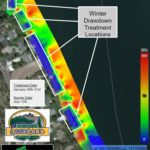 With the introduction of flowering rush into aquatic systems in the Pacific Northwest, Lakeland Restoration began treating in spring and fall during the drawdown period to achieve aquatic invasive plant control. Imazapyr treatments were demonstrated to control as much as 80% of flowering rush sprouts when applied to moist soil before the water elevation was brought up. Another treatment window is during fall months after water elevation is lowered prior to winter.
With the introduction of flowering rush into aquatic systems in the Pacific Northwest, Lakeland Restoration began treating in spring and fall during the drawdown period to achieve aquatic invasive plant control. Imazapyr treatments were demonstrated to control as much as 80% of flowering rush sprouts when applied to moist soil before the water elevation was brought up. Another treatment window is during fall months after water elevation is lowered prior to winter.
Seasonal mixing patterns in shallow lake controls vertical distribution of arsenic
BY SAMANTHA FUNG, GRADUATE STUDENT RESEARCHER, UNIVERSITY OF WASHINGTON
Lake Killarney is a small, unassuming lake in the south-central Puget Sound region. It is surrounded by trees and houses and is a popular spot for recreation- it is common to see people fishing from the shore or kayaks, or swimming during the warm summer months. Despite the lake’s picturesque quality, it is highly arsenic-contaminated, with sediment and surface water concentrations of up to 206 ppm and 70 ppb respectively. The source of the contamination was the ASARCO copper smelter in Ruston, WA, which operated from 1890 to 1986. Plumes of byproduct released in the smelter’s smokestack settled out and contaminated much of the region’s soil and lakes with arsenic.
A 250-year history of cyanobacteria in Anderson Lake, Jefferson County
BY WILLIAM HOBBS AND SIANA WONG, WASHINGTON STATE DEPARTMENT OF ECOLOGY, ROLF VINEBROOKE, UNIVERSITY OF ALBERTA
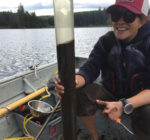 We often hear the question of whether cyanobacteria (sometimes referred to as toxic algae) are a recent phenomenon in certain lakes. Generally, we don’t have the monitoring data to answer this. One possible way to investigate this question is to use the lake sediment record to detail recent changes in the lake and the surrounding watershed. As algae grow and die, they are deposited on the bottom of the lake and accrue year after year. A sediment core that is dated using radioisotopes can provide a detailed record of what was growing in the lake and accumulating year after year.
We often hear the question of whether cyanobacteria (sometimes referred to as toxic algae) are a recent phenomenon in certain lakes. Generally, we don’t have the monitoring data to answer this. One possible way to investigate this question is to use the lake sediment record to detail recent changes in the lake and the surrounding watershed. As algae grow and die, they are deposited on the bottom of the lake and accrue year after year. A sediment core that is dated using radioisotopes can provide a detailed record of what was growing in the lake and accumulating year after year.
Using floating treatment wetlands to reduce contaminants in urban stormwater to ameliorate impacts to coho salmon
BY LIZBETH SEEBACHER, RESEARCH SCIENTIST, UNIVERSITY OF WASHINGTON
Salmon recovery through habitat restoration has been the focus of land managers since at least the 1990’s. During effectiveness monitoring surveys, behavior of returning pre-spawn adult coho revealed water quality problems with surface swimming, gaping, fin splaying and loss of orientation and equilibrium. The affected fish died within hours and female carcasses showed high rates of egg retention. After many spawning seasons spent observing water quality conditions, the thing that stood out as responsible for mortality was rain events and urban watersheds. The mortality syndrome was prevented when highway run-off was pretreated with biomedia.

